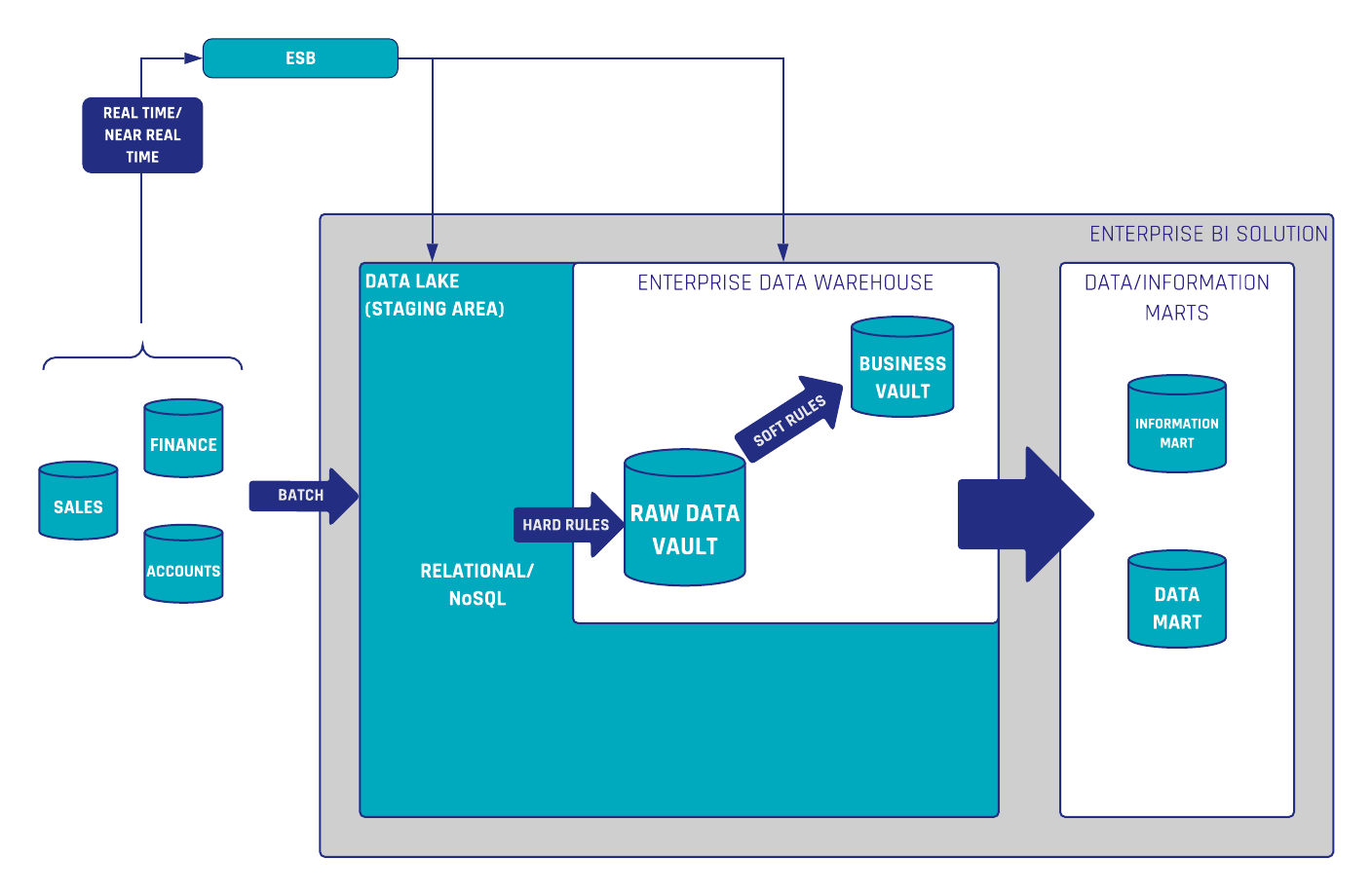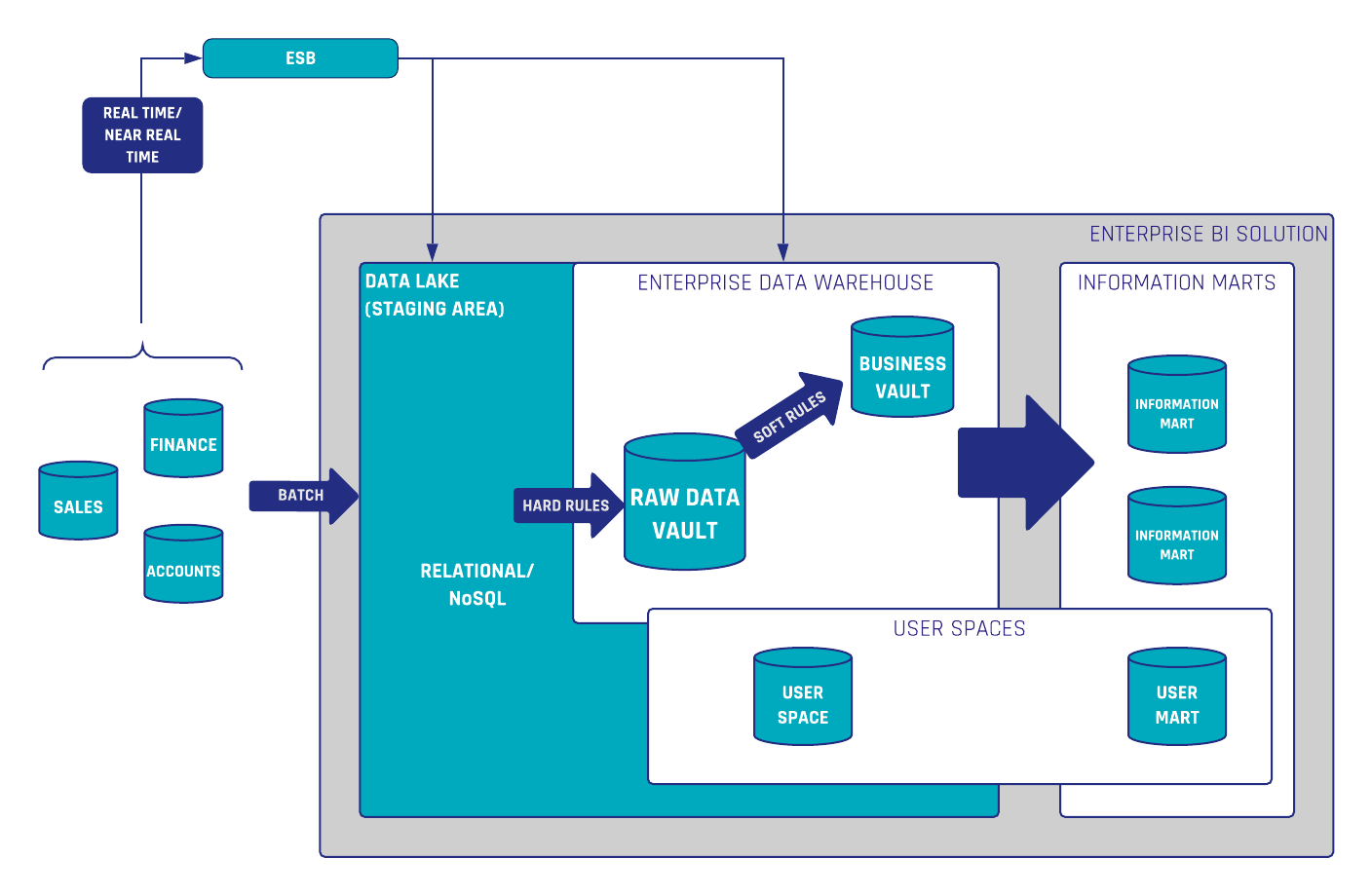The Data Vault 2.0 Layers
This issue covers write backs into the enterprise data warehouse and how the Data Vault 2.0 architecture can facilitate it. Many people already know the three layer architecture of data warehouses which is used in Data Vault 2.0. The first layer represents the staging area which holds the raw data from the source systems. The enterprise data warehouse layer, which in this case contains a Data Vault 2.0 model and the third layer with the Information Marts, which deliver the information in various structures (Star Schemas, Snowflake Schemas etc.).

Figure 1. Data Vault 2.0 Architecture
This architecture provides possibilities and benefits for data write backs. Two possibilities are writing back data into the enterprise data warehouse and into the source systems. This issue covers the write back into the enterprise data warehouse, while an upcoming article will cover the write back into the source systems.
In this article:
Write backs in the Enterprise Data Warehouse (EDW)
The IT-driven architecture in figure 1 can be extended by a user-driven area. Writing back to the enterprise data warehouse does not mean that users have the right to change existing IT-driven data within. Rather, they are given the opportunity to load and work with data from the enterprise data warehouse into a user space that they can use but are also responsible for. Especially power users or data scientists, who don’t need to know the full Data Vault 2.0 principles, can quickly create their own solutions without changing the data within the enterprise data warehouse. In this case, power users who build their own, custom solutions can write back data and information into the Enterprise Data Warehouse by leveraging the dedicated user space for this purpose.
This entire approach is called managed Self-Service BI. It provides a managed environment where data is provided in a controlled and secure manner. Power Users and Data Scientists can only query the data they are allowed to see from a data security perspective. Of course the user spaces are limited to avoid storage and CPU consumption problems. In addition to that, the EDW is “managed” – that means that besides security, other organizational or regulatory guidelines are in full compliance: for example processing personal data is according to the law. With this setup custom solutions can be created and re-used for individual information delivery. It also can save time in the deployment process of new business rules, because the solution is already available and “in production”.

Figure 2. Managed-Self-Service BI
By using managed self-service BI power users and data scientists alike get an opportunity to extend the IT-driven assets by their own data and calculations. The write backs have no time-limit: instead they exist until a process is started to industrialize the solution – moving it into the IT driven areas of the EDW.
Conclusion
Managed Self-Service BI allows users to create their own solutions and drive the business towards data-driven decisions. The process is supported by facts based on data, as well as saving time and money. The use of write-back in Data Vault 2.0 is a key factor which enables you and your organization to get proactive and more efficient.

Good Blog Keep it up